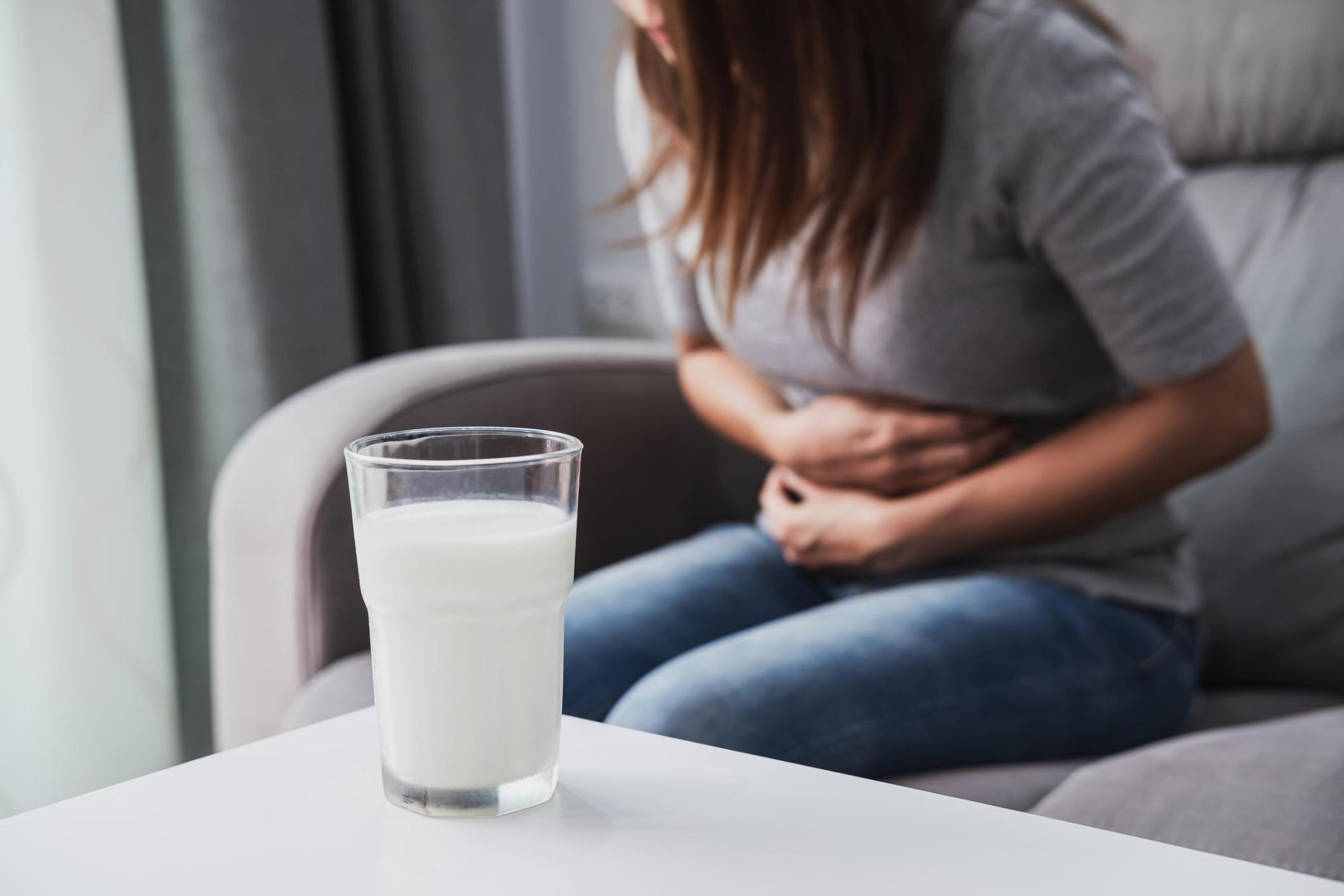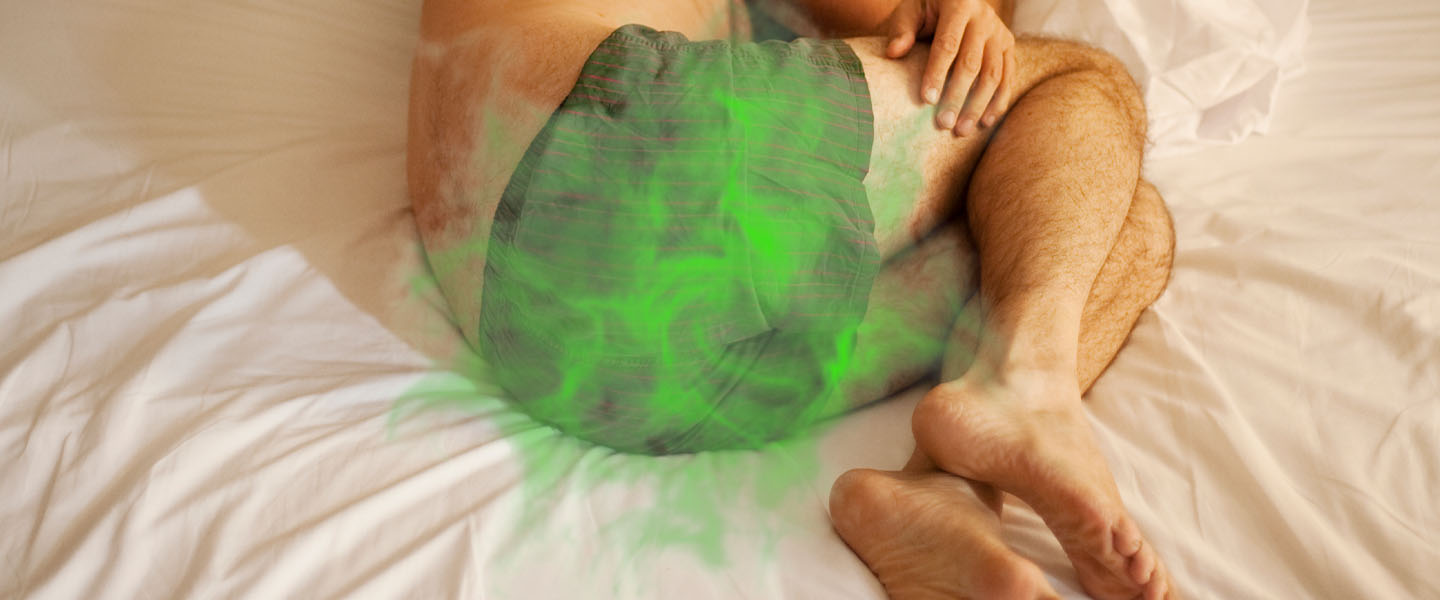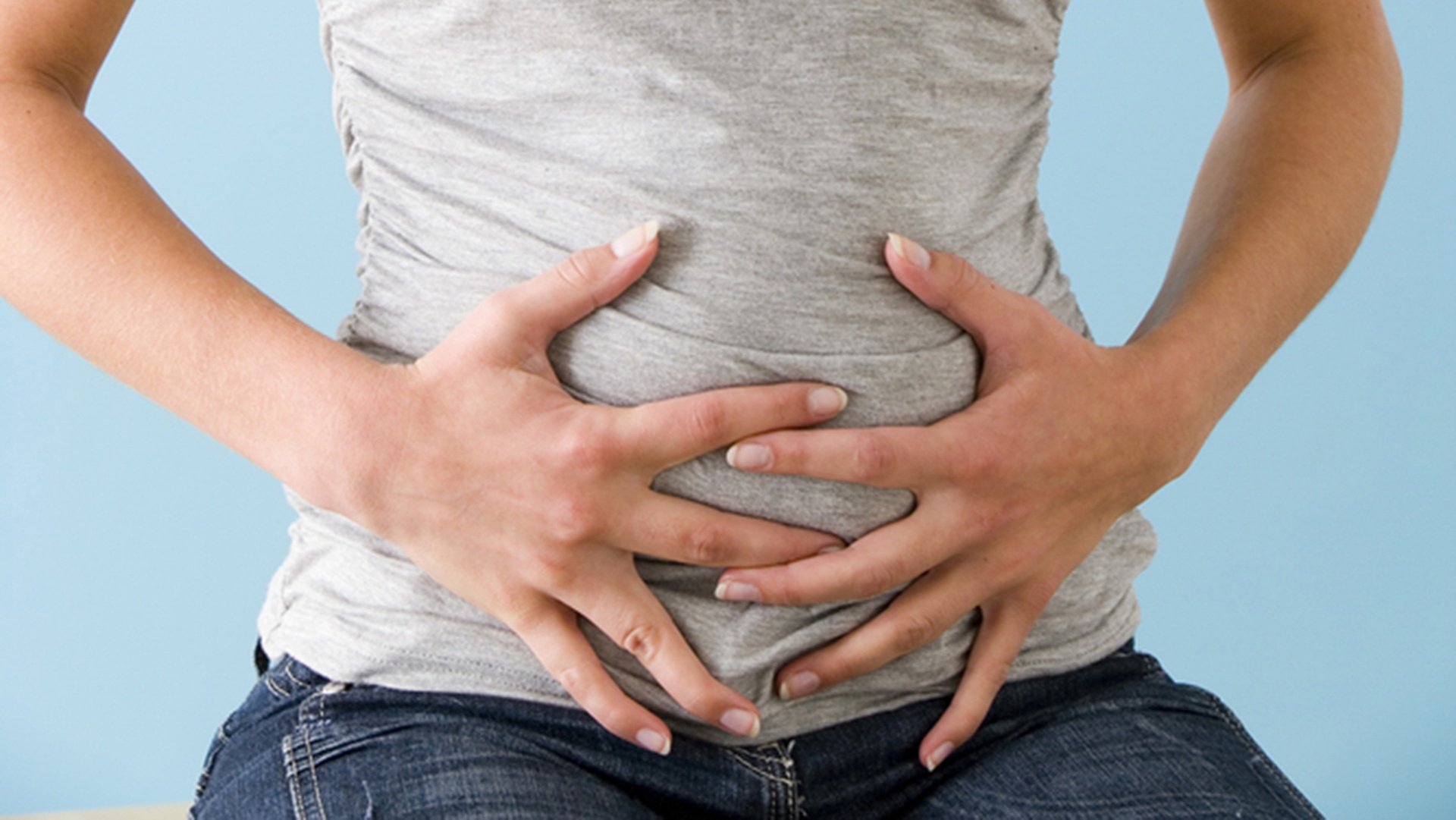

FAQs
Why Do I Fart When I Drink Milk
Modified: September 23, 2023
Discover the answer to one of the most common general questions: why do I experience excessive gas after drinking milk? Find out the scientific reasons behind this phenomenon.
(Many of the links in this article redirect to a specific reviewed product. Your purchase of these products through affiliate links helps to generate commission for Under-tec.com, at no extra cost. Learn more)
Table of Contents
- Introduction
- The Science behind Flatulence and Digestion
- Lactose Intolerance: A Common Culprit
- Role of Lactose in Milk and Its Digestion
- How Lactose Intolerance Causes Excessive Gas
- Other Factors Contributing to Flatulence after Consuming Milk
- Tips to Reduce Flatulence from Drinking Milk
- When to Seek Medical Help
- Conclusion
Introduction
Flatulence, more commonly known as passing gas or farting, is a natural and normal bodily function. It is a result of the digestive process and the breakdown of food within the gastrointestinal tract. While flatulence is a common occurrence for everyone, some individuals may experience increased gas production and discomfort after consuming certain foods or beverages, such as milk.
This article aims to explore the relationship between drinking milk and flatulence. We will delve into the science behind digestion, discuss lactose intolerance as a common culprit for excessive gas, and explore other factors that contribute to flatulence after consuming milk. Additionally, we will provide helpful tips on how to reduce flatulence caused by drinking milk.
It is important to note that everyone’s body reacts differently to various foods and beverages. While some individuals may experience excessive gas after drinking milk, others may not be affected at all. It is essential to understand your body and its unique response to certain foods in order to make informed dietary choices.
So, if you’ve ever wondered why you tend to fart more after enjoying a glass of milk, read on to uncover the fascinating science behind it!
The Science behind Flatulence and Digestion
Before we dive into the specifics of how milk consumption can lead to flatulence, let’s first understand the science behind digestion and the formation of gas in our digestive system.
When we eat or drink, the digestive process begins in our mouth, where saliva helps break down carbohydrates. From there, the food travels down the esophagus and into the stomach, where it is further broken down by stomach acid and enzymes. The partially digested food then moves into the small intestine, where most of the absorption of nutrients takes place.
During digestion, certain carbohydrates can be difficult for our bodies to break down completely. This is especially true for a sugar called lactose, which is found in milk and other dairy products. Lactose requires an enzyme called lactase to be properly digested.
Now, let’s talk about the role of lactose in milk and how it is digested in our bodies. Lactose is a disaccharide, meaning it is composed of two sugar molecules – glucose and galactose. In order to break down lactose, our bodies need to produce the lactase enzyme.
However, for some individuals, their bodies do not produce enough lactase or do not produce it at all. This condition is known as lactose intolerance. When lactose is not properly digested, it can cause a host of gastrointestinal symptoms, including flatulence.
When undigested lactose reaches the large intestine, it encounters bacteria that ferment it. Through this fermentation process, gas, including methane, carbon dioxide, and hydrogen, is produced. It is this gas that gets released as flatulence.
It is important to note that lactose intolerance is different from a milk allergy. Milk allergy is an immune response to the proteins found in milk, whereas lactose intolerance is a deficiency of the enzyme needed to digest lactose.
Now that we have a basic understanding of digestion and how lactose intolerance plays a role in flatulence, let’s explore the specific ways in which drinking milk can lead to excessive gas production.
Lactose Intolerance: A Common Culprit
Lactose intolerance is a prevalent digestive disorder that affects a significant portion of the population. It occurs when the body does not produce an adequate amount of the enzyme lactase, which is responsible for breaking down lactose, the sugar found in milk and dairy products.
There are three different types of lactose intolerance: primary, secondary, and congenital.
Primary lactose intolerance is the most common type and typically develops later in life. It occurs when the production of lactase decreases over time. This decline is often hereditary, meaning it runs in families. Some ethnic groups, particularly those of African, Asian, or Hispanic descent, are more prone to developing primary lactose intolerance.
Secondary lactose intolerance can occur as a result of certain medical conditions that damage the small intestine, such as celiac disease, Crohn’s disease, or certain infections. In these cases, the reduced production of lactase is temporary and may improve once the underlying condition is addressed.
Congenital lactose intolerance is a rare genetic disorder in which infants are born with little or no lactase enzyme. This condition is evident from birth, and affected infants must follow a lactose-free diet.
When individuals with lactose intolerance consume milk or dairy products, the undigested lactose can cause a range of uncomfortable symptoms, including flatulence, bloating, diarrhea, and abdominal pain. The severity of these symptoms can vary from person to person, with some individuals experiencing only mild discomfort and others being more severely affected.
The link between lactose intolerance and flatulence lies in the fermentation of undigested lactose by bacteria in the large intestine. As mentioned earlier, when lactose reaches the large intestine, bacteria break it down through fermentation, resulting in the production of gas. This gas builds up and eventually gets released as flatulence.
It is essential to recognize the signs of lactose intolerance and make appropriate dietary adjustments to manage the condition effectively. Fortunately, there are various alternatives available for individuals who are lactose intolerant, such as lactose-free milk, lactase supplements, and dairy-free products.
In the next section, we will explore in more detail how lactose in milk gets digested in our bodies, leading to excessive gas production and flatulence.
Role of Lactose in Milk and Its Digestion
Milk is a nutrient-rich liquid that contains a variety of essential nutrients, including carbohydrates, proteins, fats, vitamins, and minerals. One of the primary carbohydrates present in milk is lactose.
Lactose, also known as milk sugar, is a disaccharide composed of two sugar molecules: glucose and galactose. It serves as an important source of energy in infants and young mammals, including humans.
During the digestion process, lactose needs to be broken down into its individual sugar components for absorption. This breakdown requires the enzyme lactase, which is produced in the small intestine.
When we consume milk or dairy products, lactose enters the digestive system and travels through the stomach to the small intestine. In the small intestine, lactase acts upon lactose, breaking it down into glucose and galactose. These monosaccharides are then absorbed into the bloodstream, providing energy for the body.
However, for individuals with lactose intolerance, the body either produces insufficient lactase or does not produce it at all. As a result, lactose is not fully digested and remains undigested as it reaches the large intestine.
Once in the large intestine, undigested lactose encounters bacteria that reside there naturally. These bacteria ferment the lactose through a process called bacterial fermentation. During fermentation, various gases, including methane, carbon dioxide, and hydrogen, are produced.
The gas produced by the fermentation of lactose in the large intestine leads to distention and bloating, which can result in flatulence. The severity of flatulence can vary depending on factors such as the amount of lactose ingested, the degree of lactase deficiency, and the individual’s sensitivity to the gas produced.
It is worth mentioning that lactose is not the sole cause of flatulence after drinking milk. Other factors, such as the presence of other fermentable carbohydrates in milk or the individual’s overall gut health, can also contribute to the production of gas and subsequent flatulence.
In the next section, we will explore the specific mechanisms by which lactose intolerance causes excessive gas and flatulence after drinking milk.
How Lactose Intolerance Causes Excessive Gas
Lactose intolerance can cause excessive gas production, leading to uncomfortable and embarrassing flatulence. The process by which lactose intolerance triggers increased gas is through the fermentation of undigested lactose in the large intestine.
As mentioned earlier, individuals with lactose intolerance lack sufficient amounts of the enzyme lactase, which is responsible for breaking down lactose into glucose and galactose. Without enough lactase, lactose remains undigested as it passes through the digestive system.
When undigested lactose reaches the large intestine, it encounters bacteria that reside there naturally. These bacteria have the ability to ferment lactose, which means they can break it down and produce gas as a byproduct.
The fermentation process involves the bacteria metabolizing the undigested lactose, resulting in the production of gases such as methane, carbon dioxide, and hydrogen. These gases accumulate in the large intestine and can lead to bloating, distention, and increased flatulence.
The volume of gas produced can vary depending on several factors, including the amount of lactose consumed, the degree of lactase deficiency, and the types of bacteria present in the individual’s gut.
Some individuals may also experience symptoms such as cramping, bloating, and diarrhea in addition to flatulence. These symptoms occur as a result of the increased gas production and the changes it causes in the digestive system.
It is essential to note that lactose intolerance is a condition that affects individuals to varying degrees. Some individuals may only experience mild discomfort or minimal flatulence after consuming small amounts of lactose, while others may have more severe symptoms with even the smallest trace of lactose.
Furthermore, it is worth mentioning that lactose intolerance can vary throughout an individual’s life. Some people may have a gradual decline in lactase production as they age, while others may experience more sudden onset lactose intolerance due to factors such as illness or medication use.
Understanding how lactose intolerance leads to excessive gas is crucial in managing the condition effectively. By reducing lactose intake or using lactase supplements, individuals can minimize gas production and alleviate symptoms such as flatulence.
In the next section, we will discuss other factors that can contribute to flatulence after consuming milk, aside from lactose intolerance.
Other Factors Contributing to Flatulence after Consuming Milk
While lactose intolerance is a common cause of flatulence after drinking milk, there are other factors that can contribute to excessive gas production and flatulence. These factors include:
1. Other fermentable carbohydrates: In addition to lactose, milk contains other types of carbohydrates, such as oligosaccharides and galactans. These carbohydrates can be difficult for some individuals to digest, leading to increased gas production and flatulence.
2. Gut microbiota imbalance: The balance of bacteria in our gut plays a crucial role in digestion and overall gut health. When the balance of beneficial and harmful bacteria is disrupted, it can lead to excessive gas production. Certain factors, such as a high-fat diet, stress, and the use of antibiotics, can negatively impact the gut microbiota and contribute to flatulence after consuming milk.
3. Individual sensitivity: Each person’s digestive system is unique, and some individuals may have a heightened sensitivity to certain foods or components of milk. This sensitivity can lead to an increased production of gas and flatulence after milk consumption.
4. Swallowing air: When drinking or consuming any type of food or beverage, it is common to swallow some air. This air can get trapped in the digestive system and contribute to bloating and flatulence. It is important to be mindful of the way we eat and drink, taking small sips and chewing food thoroughly to minimize air swallowing.
5. Non-dairy additives: Some individuals may experience flatulence after consuming milk due to non-dairy additives or ingredients present in certain milk products. These additives, such as artificial sweeteners, may have a laxative effect or be difficult to digest, leading to increased gas production.
Understanding these additional factors that contribute to flatulence after drinking milk is crucial in identifying the specific cause of excessive gas production. By identifying and addressing these factors, individuals can manage their symptoms and find ways to enjoy milk or milk alternatives without discomfort.
In the next section, we will provide some helpful tips on how to reduce flatulence after consuming milk.
Tips to Reduce Flatulence from Drinking Milk
Experiencing flatulence after drinking milk can be uncomfortable and embarrassing. Fortunately, there are several strategies and tips that can help reduce flatulence and alleviate the associated discomfort. Here are some tips to consider:
1. Choose lactose-free or low-lactose alternatives: Lactose-free milk and dairy products are readily available in most grocery stores. These products have lactase added, which helps break down lactose before consumption. Alternatively, opting for products with lower lactose content, such as hard cheeses or aged dairy products, can also be tolerated better.
2. Gradually increase lactose intake: If you are lactose intolerant but still want to enjoy milk, try gradually increasing your lactose intake over time. This can help your body adapt to the lactose and minimize digestive symptoms, including excessive gas. Start with small amounts of milk or dairy products and gradually increase the portion size as tolerated.
3. Use lactase supplements: Lactase supplements are available over-the-counter and can be taken before consuming milk or dairy products. These supplements provide the lactase enzyme that your body may be lacking, helping break down lactose more effectively and reducing the chances of flatulence.
4. Experiment with dairy alternatives: If you find that even lactose-free dairy products still cause flatulence, consider trying non-dairy alternatives. There are a wide variety of milk alternatives available, including almond milk, soy milk, coconut milk, and oat milk. These alternatives are naturally lactose-free and can be suitable substitutes in recipes and beverages.
5. Be mindful of your overall diet: Certain foods can contribute to increased gas production and flatulence. Avoiding or limiting foods known to cause gas, such as beans, cabbage, onions, and carbonated beverages, can help reduce flatulence after drinking milk. In addition, maintaining a balanced diet with sufficient fiber intake and staying hydrated can promote healthy digestion.
6. Take note of your symptoms: Keeping a food diary and noting any symptoms or triggers can help identify specific foods or beverages that worsen flatulence. By identifying these triggers, you can make more informed dietary choices and minimize discomfort.
7. Seek professional help: If your symptoms persist or worsen, it may be beneficial to consult a healthcare professional. They can perform tests to diagnose lactose intolerance or other digestive disorders, provide personalized dietary recommendations, and offer guidance on managing flatulence.
Remember, what works for one person may not work for another, so it is important to listen to your body and find the strategies that best suit you. With the right approach and adjustments, it is possible to enjoy milk or milk alternatives without excessive gas and flatulence.
In the next section, we will discuss when it is appropriate to seek medical help regarding flatulence after drinking milk.
When to Seek Medical Help
Experiencing occasional flatulence after drinking milk is usually not a cause for concern, especially if you have known lactose intolerance. However, there are certain situations where it may be appropriate to seek medical help. Here are some instances where medical intervention may be necessary:
1. Severe or persistent symptoms: If your flatulence is accompanied by severe abdominal pain, persistent diarrhea, or other troubling symptoms, it is important to consult a healthcare professional. These symptoms may indicate an underlying gastrointestinal condition that requires medical attention.
2. Sudden onset of symptoms: If you have never experienced flatulence after consuming milk before and suddenly develop these symptoms, it is advisable to see a healthcare professional. This sudden onset may indicate an acute intolerance or an underlying condition that needs to be evaluated.
3. Unexplained weight loss or nutrient deficiencies: If you are consistently experiencing flatulence after drinking milk or consuming dairy products and are also experiencing unexplained weight loss or nutrient deficiencies, it is important to seek medical assistance to rule out any underlying conditions that may be causing these symptoms.
4. Unable to manage symptoms with lifestyle changes: If you have tried various strategies, such as lactose-free alternatives, dietary adjustments, and lactase supplements, but continue to experience persistent and bothersome flatulence, it may be beneficial to consult a healthcare professional. They can assess your condition and provide further guidance and treatment options.
5. Concerns about other digestive issues: If you have ongoing digestive issues alongside flatulence, such as chronic diarrhea, constipation, or blood in your stools, it is essential to seek medical help. These symptoms may indicate a more severe underlying condition that requires proper diagnosis and treatment.
A healthcare professional will be able to perform a thorough evaluation, take into account your medical history, and perform any necessary tests to determine the cause of your symptoms. They can provide appropriate treatment options and guidance tailored to your specific needs.
Remember, it is always better to err on the side of caution and seek medical advice if you have concerns or if your symptoms are persistent or worsening.
Finally, in the next section, we will briefly summarize the key points discussed in this article.
Conclusion
Flatulence after drinking milk is a common occurrence for individuals with lactose intolerance. The inability to fully digest lactose, the sugar found in milk and dairy products, can lead to excessive gas production and flatulence. This happens when undigested lactose reaches the large intestine and gets fermented by bacteria.
Factors such as other fermentable carbohydrates in milk, imbalances in gut microbiota, individual sensitivity, and swallowing of air can also contribute to flatulence after consuming milk. Understanding these factors can help individuals manage their symptoms and make dietary adjustments accordingly.
To reduce flatulence caused by lactose intolerance, there are several strategies that can be employed. These include choosing lactose-free or low-lactose alternatives, gradually increasing lactose intake, using lactase supplements, experimenting with dairy alternatives, being mindful of overall diet, and seeking professional help when needed.
If symptoms persist or worsen, it is advisable to consult a healthcare professional. They can perform diagnostic tests, provide personalized recommendations, and identify underlying conditions that may be contributing to flatulence and digestive issues.
Remember, each person’s body is unique, and what works for one individual may not work for another. It is important to listen to your body and make dietary adjustments accordingly to manage flatulence and promote overall digestive health.
By understanding the science behind digestion, the role of lactose in milk, and the factors contributing to flatulence after consuming milk, individuals can make informed choices and find ways to enjoy milk or suitable alternatives without excessive gas and discomfort.
If you have concerns or persistent symptoms, it is always best to consult a healthcare professional for proper evaluation and guidance. Together, you can explore the best course of action to manage your symptoms and improve your overall digestive well-being.










